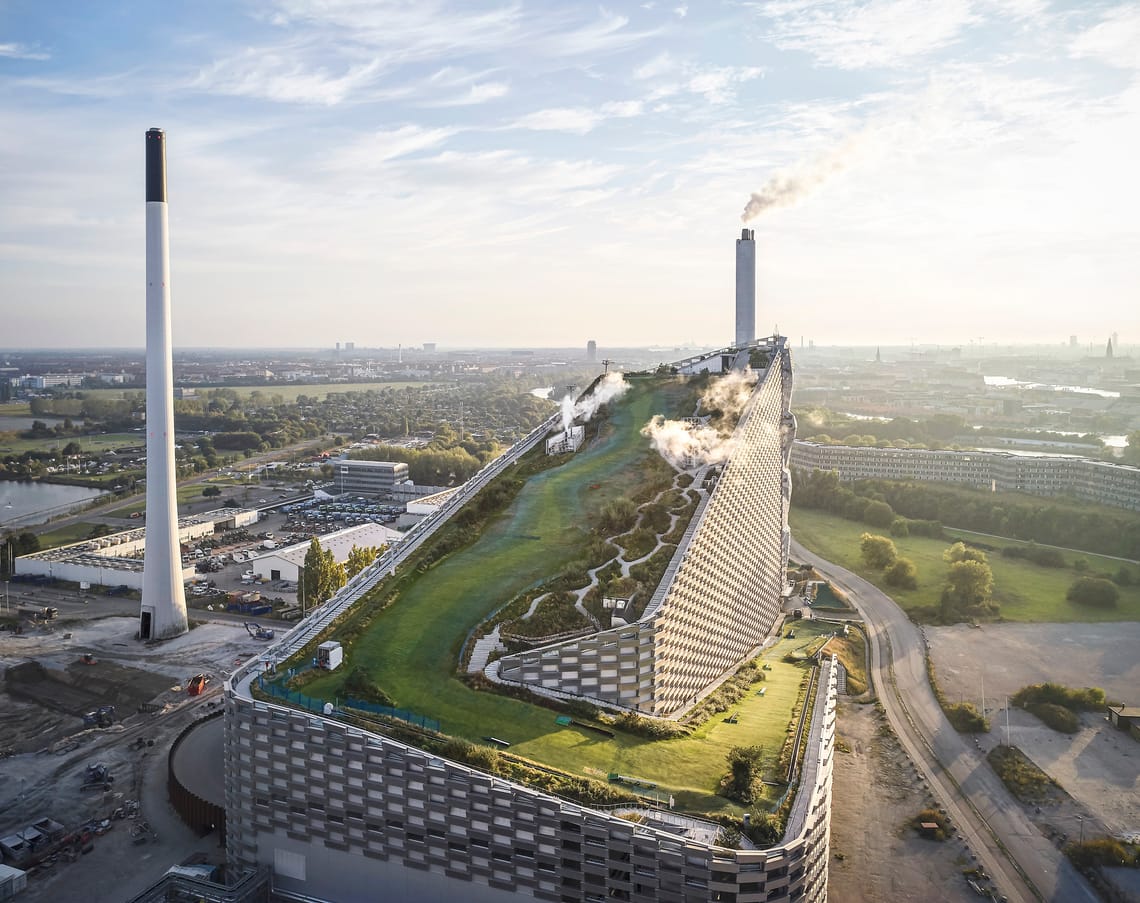
Architecture and Material: CopenHill and Maladaptive Esthetics
As architects we are vectors on the perfect axes, with destinies designated as the great connector between esthetics and utility. With this privilege we may put into motion sustainable paradigms, it is our calling and our duty. CopenHill, a power plant sporting a net zero carbon footprint in Copenhagen, has been touted as a pioneering personification of sustainable harmony that may arise from the amalgamation of esthetics and utility. Unfortunately, CopenHill has only exemplified the carbon form, being only the pliable reactionary of both the herald and the vanguard of carbon modernity paradigms. CopenHill achieves its net zero power through the glamorous recycling of trash to energy, they are an incineration plant. Simply being an incineration plant, CopenHill already has glaring problems which cement it within the carbon form, however its intersectionality with esthetics has been the very thing that plunged any effort of sustainability into the ouroboros of the carbon modernity paradigm.
“CopenHill is a perfect example of the world changing power of architecture. That we have the power to give form to the future that we want to live in,” (Bjarke). As Bjarke affirms, CopenHill has tremendous reach within the sustainability sector and how its future architecture will manifest in the future. Unfortunately, these manifestations will be all under the carbon modernity paradigm that CopenHill has played a part in bolstering.
First revealed at the start of 2011 by the Bjarke Ingels Group (BIG) and Amager Resource Center (ARC), CopenHill immediately had politicians watering at the mouth for what CopenHill could have brought to not just Copenhagen but Denmark as a whole on the international sustainability stage. From this very moment, Copenhagen’s construction might as well have been whisked out of a crystal ball. A couple months later the city of Copenhagen’s Technical and Environmental Administration (TEA) deemed Copenhill to be an economic and logistic disaster, however this appraisal was drowned out by political impressions and only taken as a single narrative in CopenHill’s story. By the end of 2011 there was a false dichotomy established, a pronouncement war between TEA and ARC on the predictions of waste; a proxy war between “green” carbon form and real environmental efforts. Start of 2012 as if satire, an anonymous letter from two officials gave all ethos to ARC, and effectively the power brokers of carbon form defeated rationality. Once constructed in 2017, CopenHill has been forever hungry for trash, a once problem now deemed an insufficient resource under the paradigm CopenHill’s emptiness demands.
To understand what made the politicians sway in the favor of ARC is to understand the maladaptive aesthetic value that CopenHill presented for its lacking in utility. CopenHill was an architectural novel, a schematic and cross-cultural transformation of a dirty powerplant to a walkable park in the summer, and a skiing hill in the winter. Climbable ornamentation spanning the walls, even if CopenHill was produced strictly from carbon intensive materials, this carbon displacement could start being offset once CopenHill was at capacity. However, capacity was the very problem. For CopenHill to maintain its aesthetic of a lone mountain among Copenhagen’s flat landscape, as a national landmark inherently with a footing into sustainable energy, it had to stay big. To the politicians it did not matter what CopenHill’s real carbon footprint was, just that the public was in love with the greenwashing. To the public CopenHill is a step forward to a bright sustainable future however it cannot even achieve that, only placing a footing into carbon form manifestations as substitutes for real sustainability.
References
Kohl, Ulrik. 2019. “The Copenhill Crisis. The Dark Side of Planning the Greenest Waste-Fired Power Plant Ever Seen.” Master Thesis. Malmö University, Urban Studies, January. https://www.academia.edu/41047764/The_Copenhill_Crisis_The_Dark_Side_of_Planning_The_Greenest_Waste_fired_Power_Plant_Ever_Seen.
Brookes, Naomi J., and Giorgio Locatelli. 2015. “Power Plants as Megaprojects: Using Empirics to Shape Policy, Planning, and Construction Management.” Utilities Policy 36 (October): 57–66. https://doi.org/10.1016/j.jup.2015.09.005.
Baldwin, Eric. 2019. “CopenHill: The Story of BIG’s Iconic Waste-To-Energy Plant.” ArchDaily. October 7, 2019. https://www.archdaily.com/925966/copenhill-the-story-of-bigs-iconic-waste-to-energy-plant.
This was citated originally in the Chicago style. For footnotes, see original:
